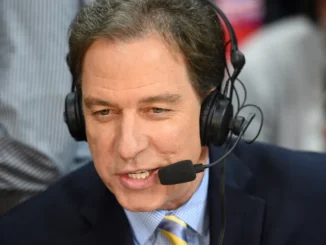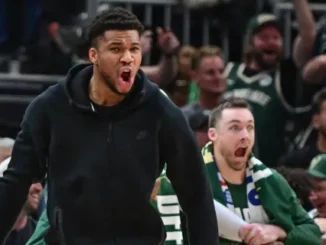
The Milwaukee Bucks find themselves at a critical juncture this offseason, fresh off a rollercoaster campaign that saw them navigate injuries, tough competition, and ultimately fall short of defending their NBA title. As they assess their roster and strategize for the future, one question looms large: should they consider trading one of their key starters?
The Bucks’ roster is anchored by their dynamic duo of Giannis Antetokounmpo and Khris Middleton, who have been instrumental in the team’s recent success. However, beyond these stars, decisions need to be made regarding the supporting cast. One name that has surfaced in trade discussions is that of Eric Bledsoe, the veteran guard whose performance has fluctuated over recent seasons.
Bledsoe’s tenure in Milwaukee has been marked by moments of brilliance interspersed with inconsistency. While he provides defensive tenacity and athleticism, his offensive output has been a point of contention. Last season, Bledsoe averaged 12.2 points, 3.8 rebounds, and 3.8 assists per game, shooting 42.1% from the field and 34.1% from three-point range. These numbers, while respectable, may not align with the Bucks’ aspirations for consistent high-level performance.
Trading Bledsoe could yield several benefits for the Bucks. Firstly, it could create financial flexibility, as Bledsoe is owed $18.1 million next season and $19.4 million in the following year. This cap space could be utilized to bolster the roster in other areas of need, such as perimeter shooting or additional frontcourt depth. Secondly, it could open up opportunities for younger players on the roster or incoming talent via trade or free agency.
Moreover, Bledsoe’s departure could potentially improve team chemistry and cohesion. While he has been a valuable contributor during his time in Milwaukee, there have been instances where his fit within the team’s system has been questioned. A trade could allow the Bucks to find a player whose skill set complements Antetokounmpo and Middleton more effectively, enhancing the team’s overall performance.
However, trading Bledsoe is not without its risks. His defensive prowess and experience could be difficult to replace, especially considering the competitive landscape of the Eastern Conference. The Bucks would need to ensure that any trade returns value commensurate with Bledsoe’s contributions, whether in the form of young prospects, draft picks, or established players who can contribute immediately.
Additionally, the emotional and leadership dynamics within the locker room must be considered. Bledsoe is respected by his teammates and has been a vocal presence both on and off the court. His departure could impact team morale, requiring careful navigation by the coaching staff and front office to mitigate any potential fallout.
Ultimately, the decision to trade Eric Bledsoe hinges on the Bucks’ long-term vision and their assessment of his role within the team’s evolving strategy. While he has been a significant contributor during his tenure, the NBA landscape is constantly evolving, and teams must adapt to remain competitive.
As the offseason progresses, Milwaukee’s front office will undoubtedly weigh all options carefully. Whether they decide to keep Bledsoe and work on maximizing his impact or explore trade opportunities to reshape the roster, the goal remains clear: to position the Bucks for sustained success in a fiercely competitive league.
In conclusion, while trading a key starter like Eric Bledsoe presents both risks and potential rewards, it is a decision that requires thoughtful consideration of the team’s immediate needs and long-term goals. Whatever path the Bucks choose, their fans and the broader NBA community will be watching closely as they navigate the complexities of the offseason.



Be the first to comment